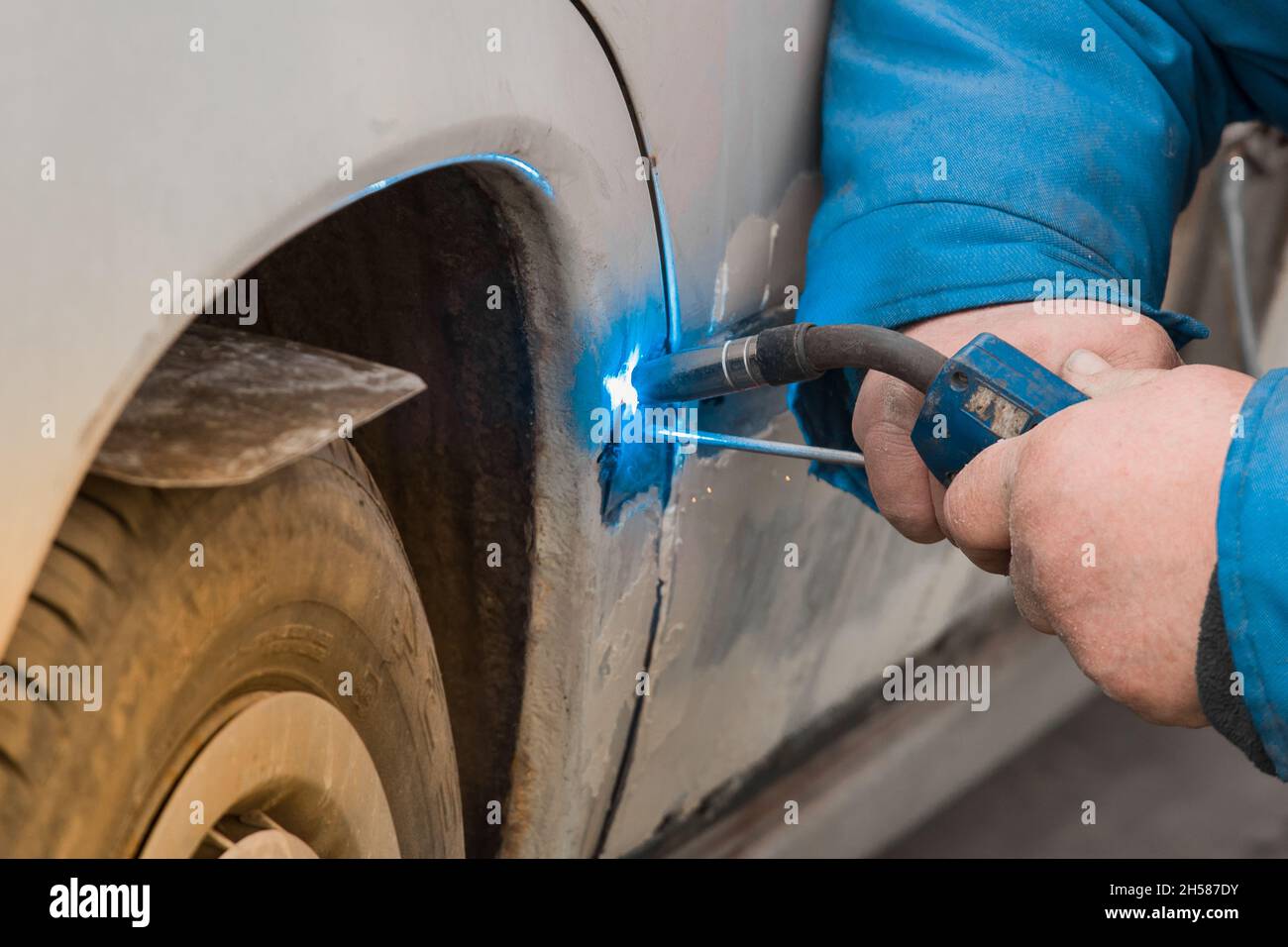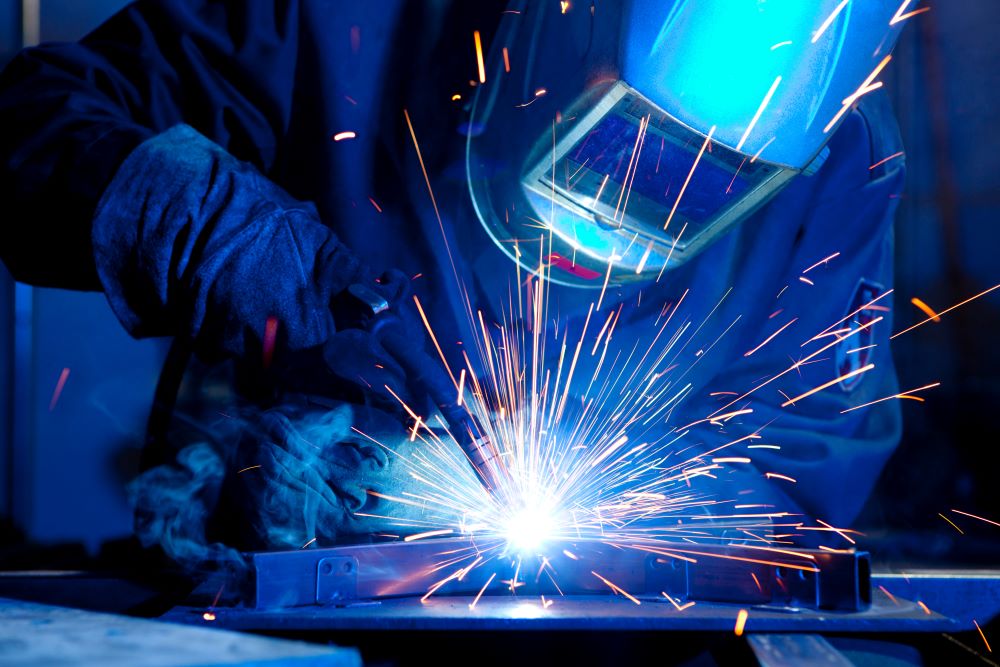Usual Welding Repair Work Issues and Exactly How to Address Them Successfully
Welding repairs often experience a variety of concerns that can threaten the honesty of the last product. Typical problems include inadequate infiltration, porosity, and imbalance, amongst others. Each issue offers distinct difficulties that need details techniques for resolution. Comprehending these problems is essential for welders aiming to boost their end results and skills. This conversation will discover these usual welding fixing problems and effective techniques to address them.
Inadequate Infiltration
Poor infiltration happens when the weld metal falls short to completely fuse with the base material, resulting in weak joints and prospective structural failings. This concern often originates from inadequate heat input, inaccurate electrode angle, or inappropriate welding speed. Welders might run into insufficient penetration as a result of a miscalculation of the necessary criteria for a certain material density or type. Additionally, contamination on the base material's surface area can prevent effective bonding, exacerbating the issue. To resolve insufficient penetration, welders must guarantee proper settings on their tools and keep a tidy job surface. Normal examination of welds is suggested to identify any type of deficiencies early, enabling prompt adjustments and the prevention of jeopardized architectural honesty in welded assemblies.
Porosity
Porosity is a common issue in bonded joints that materializes as little gas bubbles entraped within the weld steel. This problem can jeopardize the integrity of the weld, leading to lowered stamina and possible failing under stress. Welding. Porosity commonly emerges from contamination, moisture, or incorrect welding techniques, which enable gases to run away right into the liquified weld pool. To deal with porosity, welders must assure correct surface preparation, keep a clean working atmosphere, and make use of ideal welding parameters. Additionally, selecting the best filler material and protecting gas can alleviate gas entrapment. Normal inspection and testing of welds can help determine porosity early, guaranteeing prompt rehabilitative actions are taken, consequently maintaining the high quality and dependability of the welded structure
Misalignment
Misalignment in welding can occur from different aspects, including incorrect arrangement and thermal development. Understanding the root causes is important for reliable resolution. A number of correction techniques are available to straighten components and assure structural stability.
Reasons for Imbalance
Welding misalignment often stems from a variety of underlying problems that can jeopardize architectural integrity. One primary cause is inappropriate fit-up of components prior to welding, which can lead to spaces and uneven surface areas. Variations in thermal expansion throughout the welding process can also cause distortion, particularly if the materials being signed up with have different coefficients of expansion. In addition, insufficient fixturing and securing might fail to hold elements securely in location, bring about movement throughout welding. Badly conserved equipment, including welding machines and devices, might introduce disparities in the weld bead, additional adding to misalignment. Driver error, stemming from insufficient training or experience, can likewise play a considerable duty in producing misaligned welds.

Improvement Strategies Offered
Addressing imbalance properly calls for a combination of rehabilitative methods tailored to the specific issues handy. One common method is the usage of fixtures or jigs to hold elements in the proper placement throughout welding, making sure consistent positioning. Furthermore, pre-heating the materials can help minimize distortion and enhance fit-up. For considerable imbalance, mechanical realignment methods, such as using hydraulic jacks or clamps, can be used to correct the position before welding. Post-weld heat treatment may additionally be essential to ease stress and anxieties caused by misalignment. Careful inspection and modification throughout the configuration phase can protect against misalignment issues from coming to be significant troubles, promoting a smoother welding procedure and enhancing overall architectural integrity.
Distortion
Distortion is a typical difficulty in welding that can emerge from various elements, consisting of irregular cooling and heating. Comprehending the root causes of distortion is crucial for applying reliable avoidance methods. Addressing this issue not just boosts structural stability however additionally boosts the total high quality of the weld.
Root causes of Distortion
When subjected to the intense heat of welding, materials typically undergo adjustments that can result in distortion. This sensation primarily occurs from thermal development and contraction throughout the welding process. As the weld area warms up, the product increases; upon cooling, it contracts, which can produce interior stresses. Furthermore, unequal heating across a workpiece can exacerbate these stresses, resulting in bending or flexing. The sort of material likewise plays a substantial role; steels with differing thermal conductivity and coefficients of development might respond in a different way, bring about uncertain distortions. Additionally, bad joint layout and insufficient fixturing can add to imbalance throughout welding, increasing the chance of distortion. Recognizing these reasons is crucial for effective welding fixing and prevention methods.
Avoidance Techniques
Efficient avoidance techniques for distortion throughout welding focus on regulating heat input and making certain appropriate joint layout. Preserving a constant warmth input assists to decrease thermal development and tightening, which can cause distortion. Using strategies such as pre-heating the workpiece can additionally reduce the temperature gradient, promoting uniform home heating. Furthermore, choosing suitable joint designs, such as T-joints or lap joints, can boost security and minimize stress focus. Implementing correct fixturing to safeguard the workpieces in position further help in keeping placement during the welding process. Finally, staggered welding sequences can distribute warm more equally, avoiding localized distortion. By applying these techniques, welders can substantially decrease the chance of distortion and improve the overall top quality of their welds.
Cracking
Splitting is a typical concern experienced in welding repair work, typically resulting from different elements such as inappropriate cooling prices, material choice, or poor joint preparation. The event of splits can substantially endanger the honesty of the weld, resulting in potential failings throughout procedure. To resolve this issue, welders should initially evaluate the origin, making sure that products are suitable and suitably chosen for the particular application. In addition, managing the cooling price during the welding steel welding near me procedure is crucial; quick air conditioning can generate stress and result in splitting. Correct joint layout and preparation also add to lessening the risk. Executing these strategies can enhance weld quality and longevity, inevitably lowering the chance of fracturing in ended up weldments.

Insufficient Blend
A considerable problem in welding repair work is insufficient fusion, which occurs when the weld steel does not effectively bond with the base product or previous weld passes - Montana Mobile Welding and Repair Welding. This issue can bring about weak points in the joint, potentially compromising the honesty of the welded structure. Factors adding to incomplete fusion consist of inadequate warm input, inappropriate welding method, and contamination of the surface areas being signed up with. To resolve this concern effectively, welders should guarantee correct pre-weld cleaning and surface preparation, in addition to change their welding specifications to accomplish adequate penetration and fusion. Normal assessment during the welding process can likewise aid identify insufficient fusion early, enabling prompt rehabilitative procedures to enhance the general quality of the weld
Overheating
While welding repairs can enhance architectural integrity, overheating presents a significant challenge that can result in material destruction. Too much warm throughout welding can alter the mechanical properties of metals, causing minimized toughness, enhanced brittleness, and bending. This sensation is especially vital in high-stress applications where architectural integrity is critical. Recognizing getting too hot can include aesthetic inspections for staining or distortion, as well as keeping an eye on temperature level during the welding process. To mitigate the risks related to overheating, welders must use proper techniques, such as controlling warm input, readjusting travel rate, and making use of appropriate filler materials. In official statement addition, applying pre- and post-weld warm treatments can help restore material residential properties and improve the general quality of the repair, guaranteeing long-term efficiency and security.
Regularly Asked Concerns
What Are the Common Signs of a Welding Problem?

Exactly How Can I Evaluate My Welds for Quality?
To evaluate welds for top quality, one can make use of visual inspections, ultrasonic screening, and radiographic methods. Each method ensures architectural honesty, identifies defects, and confirms adherence to specified criteria, ultimately boosting the dependability of the welded joints.
What Safety and security Preventative Measures Should I Take While Welding?
When welding, one must prioritize safety by putting on proper personal safety equipment, ensuring proper air flow, protecting flammable products away, keeping a tidy work space, and being aware of surroundings to stop injuries and accidents.
Can I Fix a Weld Without Remodeling the Entire Joint?
Repairing a weld without renovating the whole joint is feasible, relying on the damage (Belgrade Fabrication). Methods such as grinding, adding filler material, or utilizing a welding process can effectively attend to certain flaws while preserving the surrounding structure
What Tools Are Essential for Reliable Welding Repairs?
Essential tools for efficient welding fixings include a welding equipment, cord brush, grinder, safety gear, clamps, and filler products. Each tool plays an essential function in ensuring high quality and safety throughout the repair service procedure. Porosity usually occurs from contamination, wetness, or inappropriate welding strategies, which allow gases my sources to leave right into the molten weld swimming pool. Inadequately conserved tools, including welding equipments and devices, may present variances in the weld bead, further adding to imbalance. When subjected to the extreme warmth of welding, materials usually undertake changes that can lead to distortion. Splitting is a common problem experienced in welding repair services, frequently resulting from numerous factors such as incorrect air conditioning rates, product choice, or inadequate joint preparation. A substantial problem in welding repairs is insufficient combination, which occurs when the weld metal does not properly bond with the base product or previous weld passes.